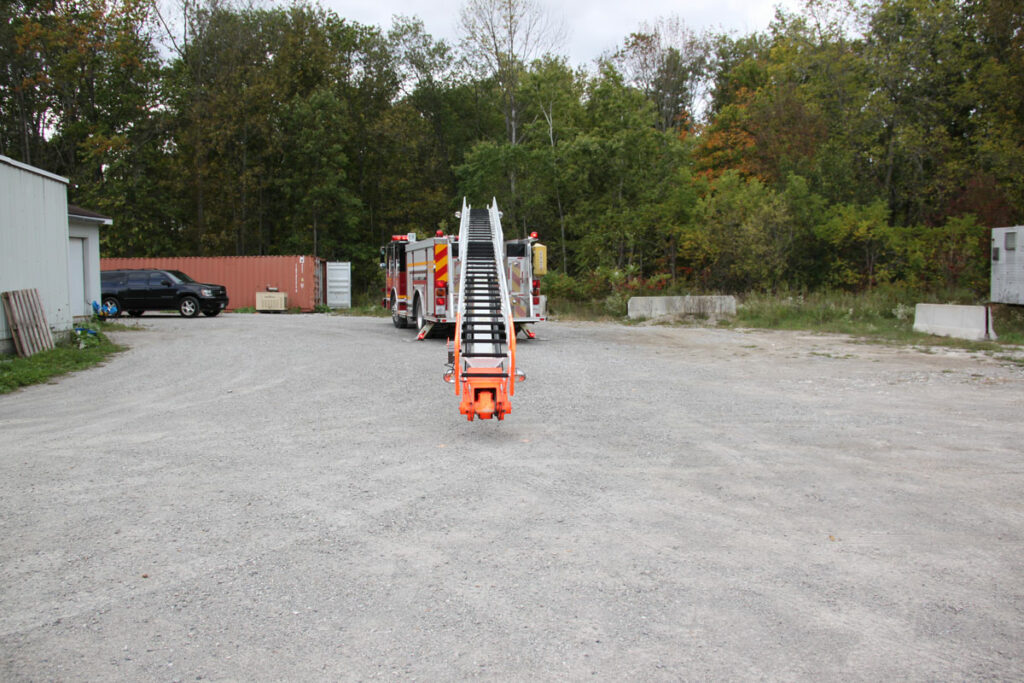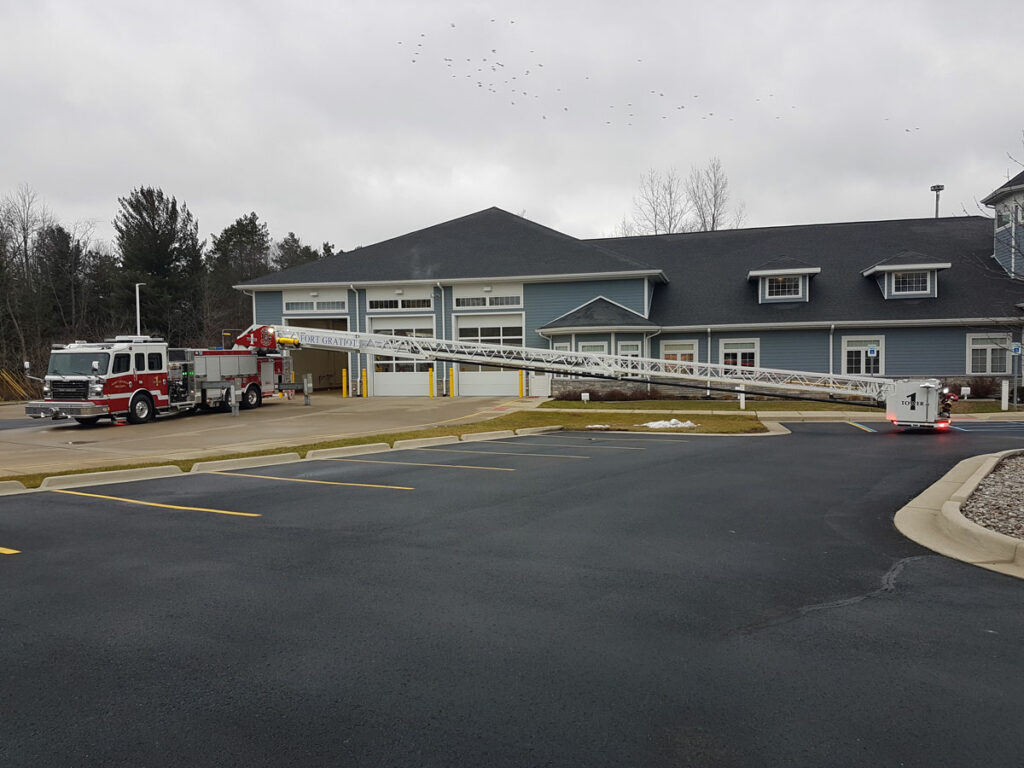Train firefighters to know the capabilities of the aerial
When firefighters check in our fire apparatus on a daily or weekly basis, we need to check every operational piece of equipment on the apparatus to ensure that it is in good working condition. On an aerial apparatus, the aerial ladder itself is a major component of the check in.
Normally the ladder will be set up with the outriggers extended and all safety devices put in place, such as pins in the outriggers or with all the “green” lights lit up on the control, indicating all outriggers are in place. Then the ladder will be raised up to about 70 degrees and extended all the way. The aerial ladder will then be rotated all the way around either going left or right, ending up back to its original position.
RELATED FIREFIGHTER TRAINING
- Aerial Ladders: How Strong Is Your Ladder Game?
- AERIAL OPERATIONS FOR LOW-RISE BUILDINGS
- Safe and Effective Aerial Ladder Operations
- Training Minutes Revisited: Removing Victims via Aerial Ladder
This operational check only verifies a small portion of the aerial ladder. The aerial ladder should be extended all the way out horizontally beside the truck at 0 degrees or lower so that we can “walk” the ladder. Walk the aerial ladder involves walking on top of it to the end and then walk under it back to conduct a visual and physical check of other components. Doing this will catch other problems that may be present.
In addition to the added benefit of checking the aerial ladder operationally, walking the aerial device out at both 0 degrees and lower also helps to train the operator on the limits of the aerial ladder. Depending on what side of the aerial truck the aerial ladder is lowered on, the operator needs to be aware of the limits and/or obstructions of the aerial ladder.
Going off the side of the aerial truck will have a few obstructions like the body, lights, cab, or compartments on top of the aerial truck’s body. Going off the back will have fewer obstructions as opposed to going off the front will have a major obstruction – the cab of the truck.

As you will see in photo 1, the aerial ladder is extended all the way and lowered off the rear of the aerial truck. This will allow the operator to practice lowering the ladder and knowing when to stop before the tip hits the ground. Every aerial ladder will flex when it is extended and will bounce a little when walking down it – when the tip is lowered to the ground, it cannot touch the ground. There needs to be cushion of flex so that the aerial ladder can flex when added weight is applied without having the tip hit the ground.

In photo 2, you will see a rear-mount platform lowered off the driver side to the ground. Notice there is a cushion of flex left between the platform and the ground so that the aerial ladder can flex and bounce as it needs to when walking down it or stepping in and out of the platform.
Equipment needed: Aerial ladder truck and an open space such as a parking lot or station blacktop.
Goal: To become familiar with the aerial ladder and know its limits when lowering it to the ground.
Drill:
- Using an open space such as a parking lot or the station front or rear blacktop, set up the aerial truck for deployment as required.
- Remove the aerial ladder from the bed and rotate it left or right so that it ends up perpendicular to the truck
- Fully extend the aerial ladder and start to lower it until the aerial tip or platform is within the desired limits from the ground
- Once positioned, walk down the aerial ladder to see if the bounce or flex will not push the aerial ladder tip or platform to hit the ground
- Repeat the same thing with the aerial ladder off the rear.
- Rotate each person into the operator’s position to practice walking down the aerial ladder.
Key points:
- Be aware of the obstructions on the side of the aerial ladder truck when lowering the aerial ladder on the side
- Get to know what the required height is for the aerial ladder tip or platform to be above the ground so as to not flex and hit the ground when walking on it or boarding it.

Mark van der Feyst has been in the fire service since 1999 and is a firefighter with the Fort Gratiot (MI) Fire Department. He is an international instructor teaching in Canada, the United States, and India, and at FDIC. He is also the lead author of Residential Fire Rescue (Fire Engineering Books & Video). He can be contacted at Mark@FireStarTraining.com.

